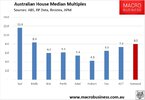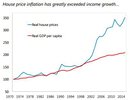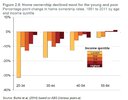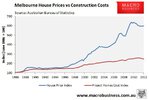- Joined
- 3 July 2009
- Posts
- 28,086
- Reactions
- 25,287
That is what I keep trying to show you, using Sydney as a guide to how the rest of Australia lives distorts the reality, a house in Sydney can probably be used as collateral for quite a big loan, which then has a compounding effect.Fair point, but I did say upper-middle.
In my mind, upper-middle is anyone in the higher earning professions - engineers, doctors, lawyers, tax accountants, uni prof's, senior public servants etc that are doing well for themselves.
All the ones I know in that group from gen X onwards have at least one IP.
Most country towns in W.A have an average price of about $150k to $400k so it is hard to gear a large loan against that.
Your idea of 'upper middle class', in reality is wealthy, in the average 'middle class' Australians eyes.
An average house in Sydney, would probably buy a motel, in a lot of country towns.










